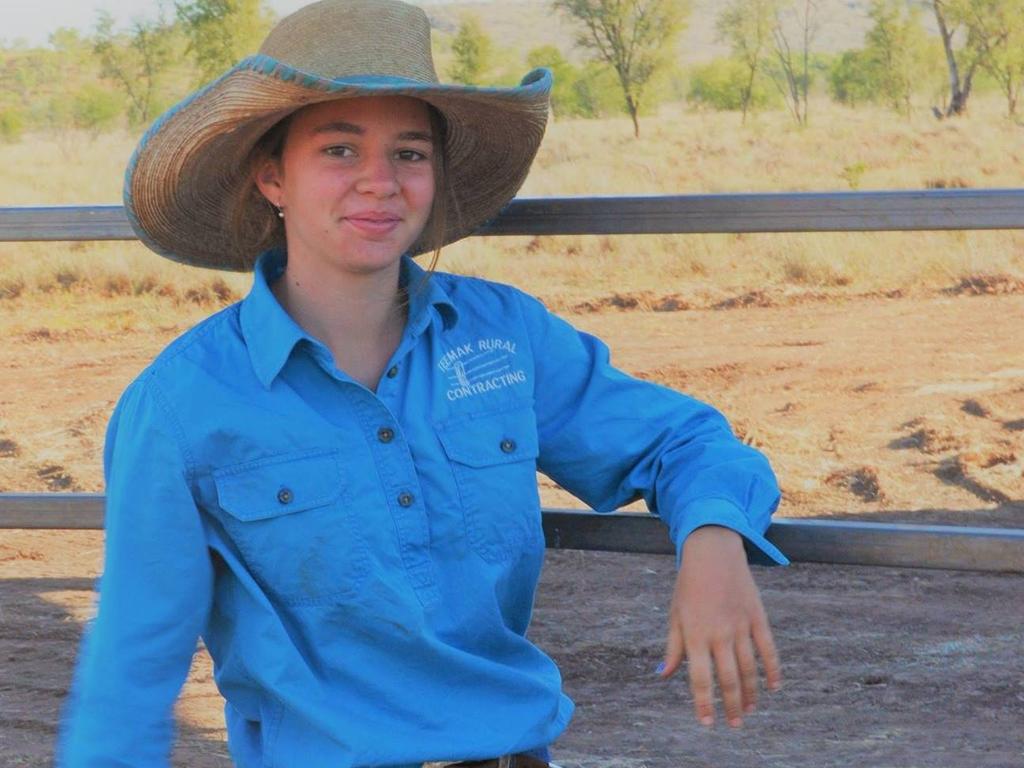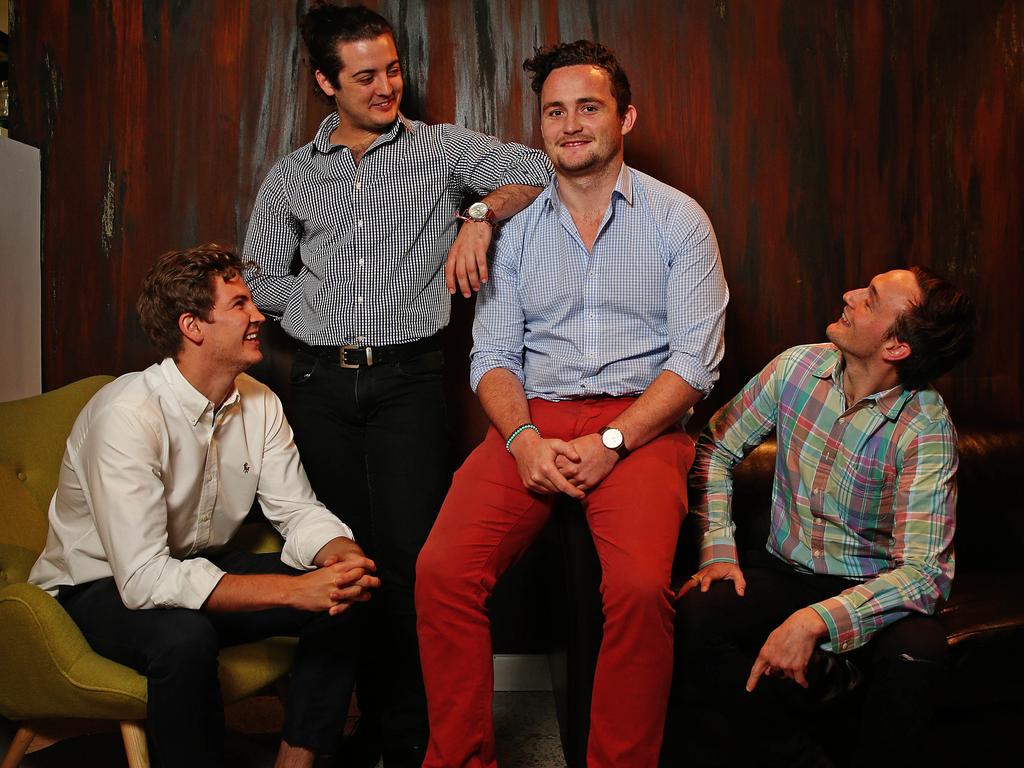Desperate problem schools are ignoring
ON MORE than one occasion Tillie Osgood has had to talk a friend out of suicide one night and hand in an assignment the next day.
TILLIE Osgood knows the pressure on high school students all too well. More than once she has spent the night talking her friends out of suicide. The next morning she’s walked into class and handed in homework, like nothing else is going on.
“A lot of my friends come to me when they’re struggling and I’m so happy that they trust me enough to do that, and my priorities will always lie with them — but school doesn’t acknowledge how difficult it is to talk your friend out of suicide one night and hand in an assignment the next day.”
The 18-year-old HSC student from Engadine in Sydney’s south believes schools just aren’t focused enough on mental health, and they’re risking the lives of their students.
“Most schools from what I hear from peers believe that they don’t have a mental health problem. It’s as if the school teachers and administrators don’t think that anything wrong could be happening in their own school.
“There is so much going on in students’ lives that schools don’t know about purely because schools don’t provide an environment where students feel safe to talk about it.”

New research from youth career and life advice provider Year13 found that 68 per cent of young Australians have experienced mental health problems, but a third do not seek help.
The survey of more than 2400 Australian students and recent school leavers aged 15 to 24 (88 per cent of respondents were aged 15 to 19) shows the pressures of getting a status update-worthy ATAR and figuring out their future has led to an unprecedented level of anxiety in Gen Z students.
While 48 per cent turn to friends and 36 per cent to family for help, just 8 per cent went to teachers and 11 per cent to school counsellors seeking out support.
Tillie said, from her own experience, this was because their problems often weren’t taken seriously.
“I feel when students do seek out help it is not always given, which is disheartening,” she said.
“Last year sometime, my friends and I were talking about how we were sick of seeing our peers struggling. I have a lot of friends who have dealt with mental health struggles and general life stresses.
“We decided we needed to do something about it (but the school) just blew it off as kids being a little bit stressed. Students are rarely taken seriously.
“I should add that there are some wonderful teachers and school administrators who do their best to support students.”
MORE: The 4am phone call that changed my life
MORE: Disturbing mental health trend among young people in Australia
She recalled a time when a friend had been sending videos of self harm, so she and some friends went to the school counsellor for help.
“I remember walking away at the end of it feeling worse than when I went in,” she said.
“They basically told us to ignore her because she was only doing it for attention and she failed to ask how my friends were feeling. The school never approached me or my friends afterwards to see how we were feeling.
“It’s little things like this that you witness over the years that make you lose respect.”
News.com.au asked the NSW Department of Education whether the school should have done more in this case.
A spokeswoman from the department declined to speak specifically about this particular complaint, but she did say the department “works closely with schools and key agencies to support and guide schools as they respond to student suicide or attempted suicide”.
She added the department has developed guidelines to support schools in responding to suicide or suicide attempts in collaboration with Headspace and the NSW Ministry of Health.
“The department’s procedures and strategies ensure rapid response and support to schools following suicide or suicide attempts that address the impact on the school and its community.”
The spokeswoman added that mental health professionals and education staff work together to support students and intervene early. They also work together to help students access specialist services.
But Saxon Phipps, the co-founder of Year13, said despite the measures schools have put in place, parents and the schools themselves were often clueless about the level of teen mental health issues out there today.

“It’s really important to break down the stigma surrounding mental health so young people can talk openly about their wellbeing and feel comfortable enough to seek professional help,” he said.
“There’s a need to provide accessible resources and services youth can turn to including in schools when they feel they cannot discuss their struggles with the people around them, especially for the LGBTQI community.”
Tillie said students often found it difficult to seek help at school because it was the source of the stress they were experiencing.
“Unfortunately for a lot of students school is a big source of stress and anxiety … (and) if school is the thing that is hurting a student they’re not going to go to the school for help,” she said.
“There is a lot of pressure around achieving well and getting the highest ATAR possible.
“Some of my friends get consumed by it which is understandable when schools create such a competitive environment where everything involves marking and ranking and competing, instead of learning for the sake of learning.”
WHERE TO NEXT?
The way schools educate students about what paths they can take after graduation was one of the most pressing issues on young people’s minds according to Year13’s survey.
With youth unemployment at double the national average, teens are put off from jumping straight into work after school. Young people aged between 15 and 24 are taking an average of 4.7 years to find full time work. Even uni graduates are struggling, meaning there’s no clear path to success after school.
Throw in the increasingly dire predictions about the rise of artificial intelligence and automation and students are more uncertain than ever about their futures.
“There’s a lack of engaging and easy-to-access information for students to make decisions about their future and in a rapidly changing world this is resulting in high levels of stress and insecurity among a worrying proportion of Australian teens,” Mr Phipps said.

The department spokeswoman said schools had a range of support programs for students undertaking the HSC and would always attempt to assist students who seek help.
“Students are educated and encouraged to immediately seek help for themselves or their peers if they believe there is the potential for suicide or self-harm. This is through seeking out their teachers, parents or services such as the Kids Helpline,” she said.
She said they work closely with NSW Health to develop guidelines to support schools helping students deal with mental illness and that they’ve partnered with organisations to develop evidence-based responses to young people with complex mental health issues, including responding to self-harm.
“Since 2010 the NSW Government has increased funding for student wellbeing by more than $200 million, including funding an additional 236 full-time school counselling positions over the past three years, bringing the current total to 1044,” the spokeswoman said.
“On top of this commitment, this year’s State budget also included an additional $56.7 million in funding for the Supported Students, Successful Students program, including a further $6.2 million investment to deliver an additional 55 full-time equivalent counselling positions.
“This recruitment drive by the NSW Government is the first enhancement to school counselling positions since 1996.”
BUT WHAT IF THE SCHOOL SYSTEM, NOT MONEY, IS THE PROBLEM?
Other students from across Australia revealed the pressure they were feeling at school in Year13’s survey.
A 16-year-old female student from Queensland said that “the levels of mental illness in young people today is soaring and we can deny it all we want but the correlation between the pressures and anxieties of the modern school system and these mental health issues are indubitable.”
A 17-year-old female from Western Australia also revealed that “the amount of anxiety, fear and depression caused by Year 12 and the ATAR system is vastly disproportionate to its worth, and in our current society a larger focus on improving mental health is in desperate need.”
A 17-year-old male from NSW shared how “most of my stress comes from a mix of emotional and study stress. Emotional in that I’ve recently suffered the loss of a friend, and had others friends close too, which occasionally springs up at times of extreme study stress. This is not at all a good combo, and sometimes is very overwhelming. At first I generally don’t deal with it very well because it’s not easy, but I’ve been becoming better at discussing it with close family and friends to help cope.”

WHERE ARE THE PRESSURE POINTS?
Year13’s survey also asked about what situations made young people feel uncomfortable, with 68 per cent saying going to a party only knowing one person, 49 per cent citing going for a job interview, 45 per cent saying calling to make an appointment, 35 per cent going to the doctor/dentist and just 9 per cent for going to a party knowing everyone.
To better prepare themselves for life after school, Mr Phipps said it was crucial these anxieties were overcome.
“A lot of respondents said they felt uncomfortable going for job interviews and calling to make appointments, showing that whether mild or extreme the impact of social anxiety on young people’s ability to do daily tasks may be keeping them from truly becoming independent from their parents,” he said.
Phones and social media were also shown to be both a blessing and a curse, with them providing much needed stress relief but often too much distraction as well.
Sixty-nine per cent of respondents said they checked their phone first thing in the morning and last thing at night while 67 per cent said they are spending too much time on social media. There was no need to rush in and demonise social media and technology though.
“It‘s not clear whether the benefits of social media outweigh the detriments or vice-versa,” Mr Phipps said.
“They spoke about social media both positively and negatively. It could be bad for their concentration but also a good way to relieve stress and relax, helping them wind down and take their mind off their studies.”
But it’s fair to say that phones and social media lighting up teens’ eyes in bed aren’t helping them get any more sleep.
Forty-three per cent said they were averaging less than seven hours’ sleep per night while 76 per cent were getting less than the recommended eight hours’ sleep.
Mr Phipps said sleep deprivation in young people was one of the biggest factors affecting mental health, with the effects including poor judgment, a lack of motivation, inattentiveness, moodiness, and an increased risk of obesity, drug and alcohol abuse and depression.
“To understand how and why young people are struggling at and after school it’s really important to look into the state of their physical and mental health,” he said.
If you or someone you know needs help, please contact Lifeline on 13 11 14.



